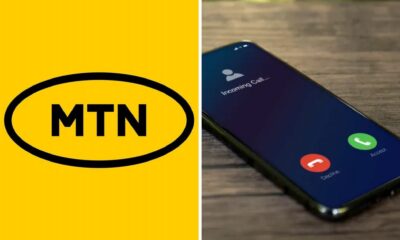Business
South Africa’s Mobile Network Stability Ranked: The Real Winner in 2025

A closer look at the networks we rely on every day
South Africans complain about many things. Load shedding, water outages, and potholes. But when it comes to mobile data, most of us have a favourite network we swear by. Some insist MTN is the fastest. Others say Rain never buffers. And Vodacom users trust the brand loyalty built over decades. But how do these networks actually perform when measured scientifically rather than by vibes and screenshots of a speed test at midnight in Sandton
This month, a new set of results landed from MyBroadband Insights. The team used more than one million mobile speed tests conducted throughout 2025 through the MyBroadband Speed Test app. The goal was simple. To see which operator offers the most stable mobile connection in the country. The results were not only interesting. They were surprisingly close.
How the data was gathered
The results came from a mix of controlled drive tests taken every quarter and crowdsourced tests from users who ran checks on their phones. Tests were downsampled by both cell tower and device to avoid skewing the results in favour of areas where users test more often.
The MyBroadband Speed Test platform is hosted in Teraco data centres, with NAPAfrica providing all network operators a free 10Gbps connection to ensure fairness. Users can test their connections through apps on iOS and Android or directly via a browser.
The platform measures download speed, upload speed, latency, and jitter. Latency is the time it takes for a device to receive a response from the server. Jitter is the variation in that latency over time. For real-time services such as gaming and voice calls, these two values matter just as much as speed.
The numbers: closer than expected
The latest results show that all major networks in South Africa perform well on average latency and jitter. In fact, the difference between the networks is so tiny that the average user would never notice it.
Here is how the networks are currently ranked by latency and jitter.
Rain: 30.36 ms latency and 6.11 ms jitter
Cell C: 35.78 ms latency and 6.89 ms jitter
MTN: 29.81 ms latency and 7.17 ms jitter
Telkom: 28.78 ms latency and 7.77 ms jitter
Vodacom: 30.81 ms latency and 8.66 ms jitter
Who came out on top
Telkom edged ahead for the best latency with an average of 28.8 milliseconds. This is an extremely short delay and more than acceptable for mobile users. Cell C ranked highest on latency, but even its 35.8 milliseconds is still a strong performance for mobile connectivity.
When it comes to jitter, Rain takes the lead with the most consistent performance. Vodacom showed the widest jitter spread, which means more variation in response time, although the difference is still so small that most people would never notice. One interesting detail is that Rain operates without legacy 2G or 3G networks, which can influence averages. MTN and Vodacom still have these older networks in their portfolios, which may affect some of their results.
What this means for everyday users
Anyone with fibre at home will know that mobile networks can never match a hard-wired Ethernet connection. This is normal. Fibre simply has less distance and less interference. But for mobile data, the results show something reassuring. South Africa’s mobile networks are performing better than many assume.
Your connection still depends on where you stand, which tower is nearby, and even whether you are indoors or outdoors. But from a national perspective, the networks are delivering stable and modern performance.
Public reaction and the cultural moment
The findings sparked predictable debates online. Your favourite network is always the one that performs best in your area. On social media, people argued about their own results, their own towers, and their own lived experience. Some accused the study of flattering certain networks. Others said the country should focus on getting everyone affordable coverage first.
But beneath the noise, the message remains. When measured at scale, our networks are more stable and more consistent than the average user believes.
A calm signal in a noisy digital age
In a year filled with economic pressure and infrastructure concerns, this is a rare area where South Africans can breathe out. Stability in the mobile sector means reliability for students, entrepreneurs, gamers, TikTok creators, and workers who depend on their connections every day. It also shows that investment in core infrastructure has continued even as other sectors struggle.
For now, at least the race for mobile stability is a close one. And that is a win for everyone who simply wants their phone to work when it matters.
Follow Joburg ETC on Facebook, Twitter, TikT
For more News in Johannesburg, visit joburgetc.com
Source: MyBroadband
Featured Image: Firecell



















